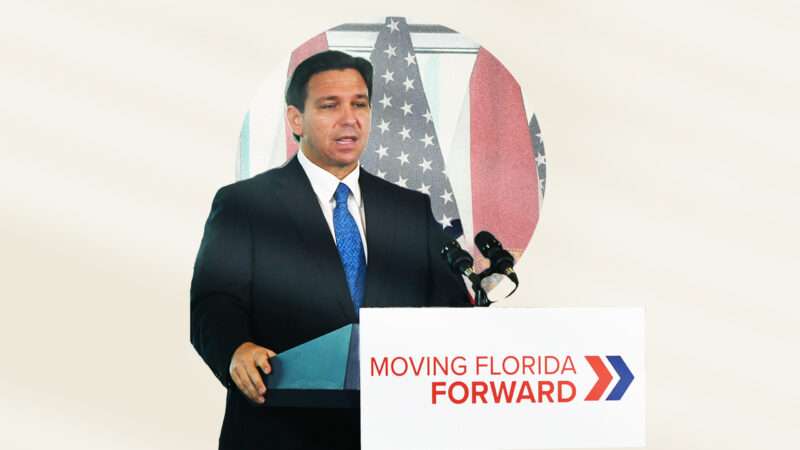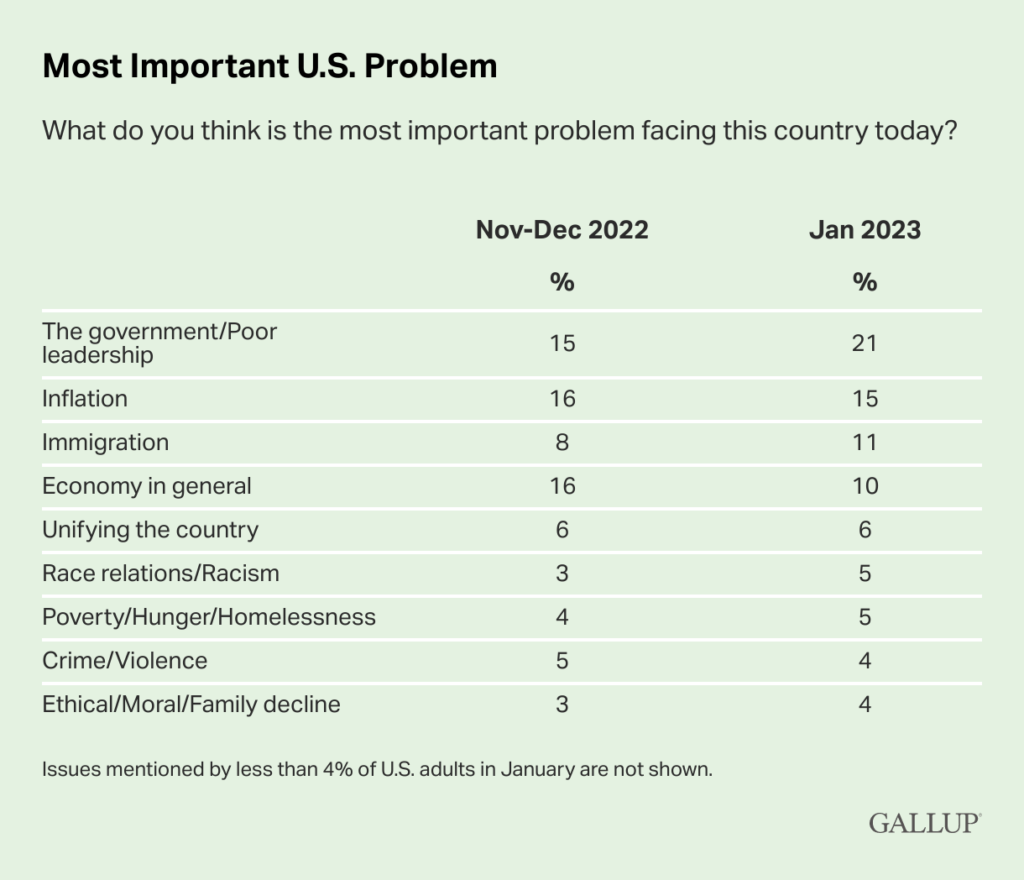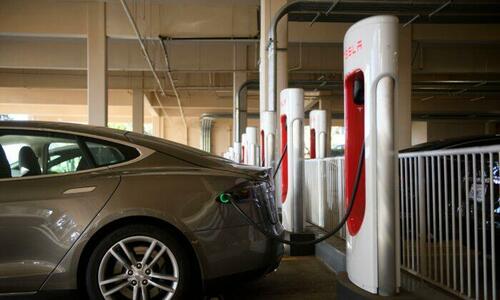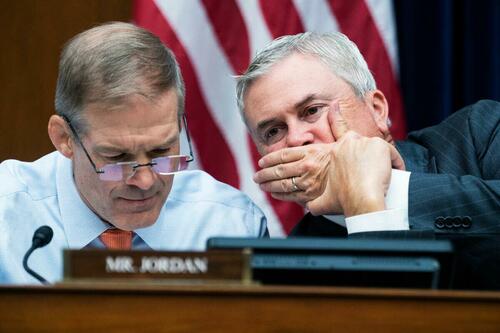Authored by Bill Blain via MorningPorridge.com,
“These beans will make you rich son…..”
Markets have a habit of getting over-excited. They get FOMO and become over hasty. Although the outlook is improving, there is certainly little to justify some of the more speculative hype dominating market moves. Time a bit of rational thinking and common sense – consider Tesla as an example of misplaced hopes…

Common Sense vs Hastiness
This morning I find myself struggling to figure out this market. Markets are broadly risk-on, when all my logic is screaming risk-neutral until we really see how inflation and interest rates are likely to settle. We will get more direction when we see and hear what Central Banks actually do – the Fed tomorrow and the BOE and ECB on Thursday – rather than how the market hopes they will act!
The fact the IMF is now revising global GDP forecasts higher in the light of US strength, China reopening and general resilience is positive. It’s clear the overall global picture is much less bleak than it seemed just a few weeks – a clear example of my mantra: “Things are never as bad as you fear, but seldom as good as you hope.”
Curiously, I am less worried about macro geopolitics – China will have absorbed lessons from Ukraine, and is as keen for an economic boom as anyone else. Russia is effectively a busted but rabid mad dog – which is a problem. Energy insecurities are being addressed. That said, we should be looking at a new World Order – figuring out what the renimibisation of commodities, the rise of an independent post-US Gulf as the world’s premier capital spigot, and the emergence of a real South Asian economic growth block, collectively mean. Clue: significant.
On the immediate threat-board I’m worried how potential failure in domestic politics across the West will play out. I can’t help but feel the latest political incompetency in the UK spells further destabilising ructions within the Conservative Party to come.
But what worries me most is the apparent return of Overly Euphoric markets. Stocks are behaving as if earnings are about to boom, consumer and government spending is about to go through the roof, and rates are going to return to negative yields – all of which are highly unlikely. The cost of living crisis, unsustainable debt, embedded inflation, plus the need to unravel the consequences of a decade of over-easy rates, need to be addressed – not brushed under the equity market carpet!
The worst thing you can ever believe about markets is they are intelligent. They aren’t. They are simply the sum of what everyone is thinking. The critical thing about the sum of what everyone is thinking: not everyone is right. Some views are easier to accept than others. This becomes important in equity markets.
-
The worlds of equity tend to be inhabited by optimists – who are always prepared to believe the economic glass is half full. This makes then susceptible to the dread market condition of Euphoric Shock – and believe foolish things. The issue with Euphoria is its dangerously infectious and triggers the dangerous conditions of FOMO (fear of missing out) and Hastiness. This means equity markets are vulnerable to optimistic upside meaning stocks tend towards overvaluation.
-
In contrast, debt/fixed income investors are a dour bunch of pessimists who spend their lives staring into half-empty cups – always assuming the worst about everything. They are vulnerable to DnG – Doom and Gloom – always assuming the worst is yet to happen. As a result bonds tend to be soberly priced to the downside risks.
Its more fun to go to parties with equity investors, but you are likely to have a least bad hangover if you go to ones hosted by bond traders…. Human history is littered with examples of putting our trust in the wisdom of others, when the reality is they didn’t have a clue what was happening. Getting it absolutely wrong is not uncommon. Particularly in markets.
A good example may be the current furore over Indian ports-to-energy-to-everything confabulation called Adani. (Interesting to see Gulf SWF’s ostentatiously subscribing to the new equity IPO yesterday – what’s the deal one wonders?) Hindenburg called Adani out as swimming naked last week, and the company has been forced into damaging rebuttals that have only increased the sense they are wrong-uns. $25 bln of debt now looks distinctly distressed in the face of the many questions investment committees and auditors will be asking from their positions of perfect hindsight. That there might be “inconsistencies at the core” of one of the largest Indian companies will, I am sure, be a matter of considerable shock and surprise to many investors… Ahem..
No matter how much we analyse, consider, stress test, scenario model, and delve into the market outlook – trying to predict the outcomes.. there is always that element of doubt. What am I missing about the downside? What factors haven’t I spotted that will support upside? It boils down to that most rare of market imputs.. Common Sense.
But in periods of Euphoria – we have the onset of FOMO and Hastiness. They act like leverage. This is a little understood market phenomena – hastiness occurs when FOMO is rife, and people feel they need to make decisions in a hasty way. Hastiness is the antithesis of Common Sense.
Let me try to explain by picking one of the overly-hasty stock stories of the current market: Tesla.
Regular readers will know I am not a fan of Elon Musk, but I have no problem with Tesla. It’s a very good auto company. They deserve full credit for the emergence of the EV market, and should probably trade at a premium to the sector – while they retain a clear market lead. But today, Tesla is massively overpriced for what it is and what can happen around it. I see its fair value being on a P/E about 14/15 times – at the moment it trades on 55! Its auto-competitors trade in single digits. It is a good firm, but way, way too expensive to its future prospects.
I simply don’t get the current enthusiasm for Tesla. The stock is up nearly 50% this year. 66% of analysts rate it a buy, only 9% reckon it’s a sell. Following rather puffy results last week, the stock soared 33% over the week. That’s staggering for a stock that already looked overpriced, but it can still be explained by factors like “the Musk effect”: which basically boils down to the hope his companies will still produce extraordinary returns, no matter what the pedestrian truth might be. There is a large element of froth.
One of my colleagues – who is a Tesla fan – sent me a summary of all the positive Tesla comments from analysts. They boiled down to the following:
-
Improved visibility/demand trajectory.
-
2mm units in the coming year is very achievable.
-
Strong quarterly results and corporate message.
-
Building a moat round customer base by cutting margins
-
Price cuts will trigger further demand, swamping production.
-
Order rates outpace capacity by factor of 2:1
-
Battery production increasing.
-
Falling auto margin will be offset by stronger energy and services revenues.
-
Maintaining leadership in EVs.
Good positive stuff.. They paints a picture of a company at the forefront of its sector. But nowhere in any of the buy-side analysis is any of the kind of stuff we used to read about Tesla when it was described as the most innovative auto disruptor on the planet. The current reports are surprisingly quiet about the kind of data driven, tech multipliers, or the auto-driving revolution the analysts promised us were going to make Tesla worth trillions – back when it was a “disruptive”, hi-tech, hi-growth stock.
Now it’s just a stock – albeit a good one. Today. Tomorrow is another place entirely.
Telsa has matured. Forget the hype – all that matters is the price. What makes Tesla worth 50 times earnings when Toyota is worth 10 times but produces 7 times as many cars? Telsa makes great EVs, but so do lots of others. I recently drove the new Volvo. Not a Tesla.. but very fine in its own way, and highlights the competition is learning. In China, where analysts expect Tesla to do well, it faces massive competition. It is too many years since Tesla introduced a new model. Detriot, Germany, Japan and elsewhere have all played catch-up and filling Tesla’s shallow competitive moat.
What has happened to Tesla’s E-Truck? What happened to autonomous driving? How does cutting their margins (they slashed car prices a few weeks ago) justify a stock rally – when halving its margins means it has to run twice as fast to stand still?
You could argue it’s all about outlook – as EVs increasingly dominate the Autosector, Tesla’s 17% market share will increase. That’s fine – let’s assume it becomes as large as Toyota. Why would it be worth a greater multiple? Now it’s a large, growing business, but recent price cuts demonstrate its competitive moat is shallow. Declining margins and increasing competition isn’t a good look – especially when all the evidence on consumers struggling to keep up payments on car leases is looking bleak.
One analyst, Vijay Rakesh of Mizuho was in the press saying that lates numbers show “good results” and “margins better than feared”. He warned about “weak consumers and affordability” as challenges, but he still expects a further 33% upside to $250! Why?
I remain highly sceptical and unconvinced. If EVs really are the future of personal transport. I have my doubts across lithium batteries, power grids and chargers, and alternatives. I expect the market will get even more competitive. It took 20 years for Tesla to go from “interesting story – but will it ever mean anything” to potentially the most overpriced stock in market. Who knows who may do create another new paradigm shift in autos via hydrogen, or capacitance, or hybrid? Anything is possible.
Look at the history of any other new emerging tech sectors and ask how many of the original aircraft manufacturers survived the first 30 years… Whatever happened to Wright Brothers, Sopwith, Fokker, Curtis…






 Pictures from today’s joint air drills between Belarus and the Russian federation, somewhere in southern Belarus.
Pictures from today’s joint air drills between Belarus and the Russian federation, somewhere in southern Belarus. 




